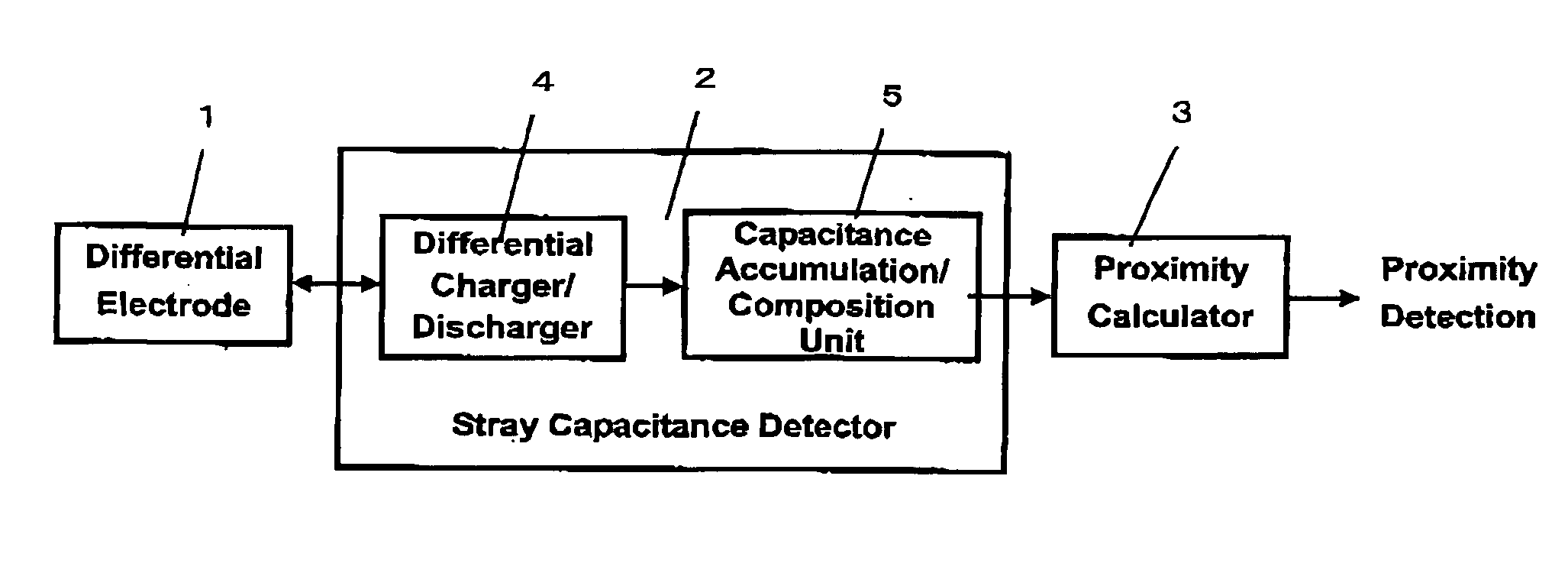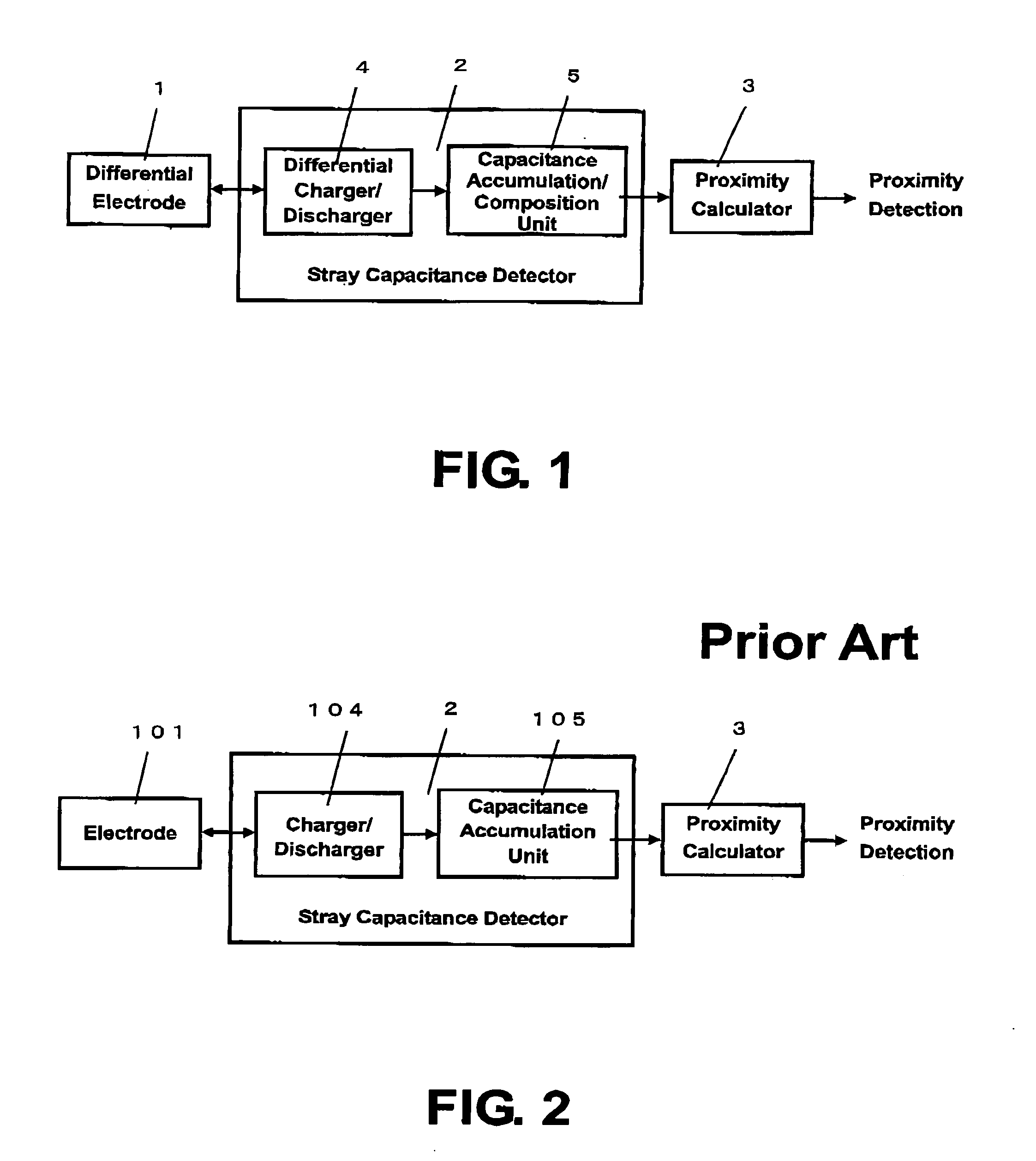Proximity detector and proximity detecting method
a detector and proximity technology, applied in the direction of resistance/reactance/impedence, pulse technique, instruments, etc., can solve the problems of difficult detection of difference in capacitance, difficult to obtain exact stray capacitance by charging or discharging electrodes, and difficult to achieve high response speed, the effect of stable detection
- Summary
- Abstract
- Description
- Claims
- Application Information
AI Technical Summary
Benefits of technology
Problems solved by technology
Method used
Image
Examples
embodiment 1
[0060]A preferred embodiment of the present invention will be described referring to FIG. 1.
[0061]A proximity detector according to the present invention includes a differential electrode for detecting approach of an object as a change in stray capacitance, a stray capacitance detector for obtaining a composite value of apparent stray capacitances of the differential electrode, and proximity calculator for detecting the approach of the object supposed from the composite value of the stray capacitances. The stray capacitance detector includes a differential charger / discharger for repeatedly charging and discharging the differential electrode, and capacitance accumulation / composition unit for accumulating a characteristic of the charge and discharge repeated by the differential charger / discharger for the differential electrode to obtain the composite value of the apparent stray capacitances of the differential electrode.
[0062]Hereinafter, each constituent in the proximity detector acc...
second embodiment
[0115]In the first embodiment, the proximity detector including the single differential electrode to detect the approach of the object has been described. In the second embodiment a proximity detector which is able to detect not only the approach of the object but also the position of the object by the use of a plurality of differential electrodes will be described.
[0116]For this purpose, in the second embodiment, as illustrated in FIG. 24, the proximity detector includes a plurality of the differential electrodes 1 supported by support 61, the stray capacitance detector 2 for detecting each of the stray capacitances of the plurality of differential electrodes, and the proximity calculator 3 for computing the approach and the position of the object based on the positions of the plurality of differential electrodes and each of the stray capacitances of the plurality of differential electrodes obtained by the stray capacitance detector 2.
[0117]Hereinafter, each constituent component w...
third embodiment
[0142]In the second embodiment, the proximity detector for obtaining the composite capacitance of the positive element electrode and the negative element electrode of the differential electrode from the characteristic of the differential charge / discharge to detect the stray capacitance with the noise being removed to accurately detect the approach and the position of the object has been described. In such a case, however, one pair of the positive element electrode and the negative element electrode of the differential electrode is required to obtain the electrostatic capacitance for one position. Accordingly, the number of required electrodes is doubled as compared to a conventional simple measurement of the stray capacitance, resulting in increase of the detection circuit scale.
[0143]Thus, in the third embodiment, a proximity detector for obtaining the electrostatic capacitance of each of the closely arranged electrodes constituting the differential electrode, while removing the no...
PUM
 Login to View More
Login to View More Abstract
Description
Claims
Application Information
 Login to View More
Login to View More - R&D
- Intellectual Property
- Life Sciences
- Materials
- Tech Scout
- Unparalleled Data Quality
- Higher Quality Content
- 60% Fewer Hallucinations
Browse by: Latest US Patents, China's latest patents, Technical Efficacy Thesaurus, Application Domain, Technology Topic, Popular Technical Reports.
© 2025 PatSnap. All rights reserved.Legal|Privacy policy|Modern Slavery Act Transparency Statement|Sitemap|About US| Contact US: help@patsnap.com



